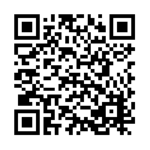Altenburger P, Ambike S & Haddad JM (2023) Integrating Motor Variability Evaluation into Movement System Assessment. Physical Therapy, pzad075, https://doi.org/10.1093/ptj/pzad075
Kulkarni A, Cui C, Rietdyk S & Ambike S (2023) Humans prioritize walking efficiency or walking stability based on environmental risk. PLoS One, 18(4): e0284278
Villanueva A, Jang S, Stuerzlinger W, Ambike S & Ramani K (2023) Advanced Modeling Method for Quantifying Cumulative Subjective Fatigue in Mid-Air Interaction. Int J Hum-Comp Stud, 169:102931
Rietdyk S, Ambike S, Amireault S, Haddad JM, Ling G, Newton D & Richards EA (2022) Co-occurrences of fall-related factors in adults aged 60 to 85 years in the United States National Health and Nutrition Examination Survey. PLoS One, 17(11):e0277406
Kulkarni A, Cui C, Rietdyk S & Ambike S (2022) Between a walk and a hard place: How stepping patterns change while navigating environmental obstacles. Motor Control, 27(1):20-34. doi: doi.org/10.1123/mc.2022-0045.
Naik A & Ambike S (2022) Expectation of volitional arm movement has prolonged effects on the grip force exerted on a pinched object. Experimental Brain Research, 240:2607-2621. doi: doi.org/10.1007/s00221-022-06438-z.
Song J, Kim K, Ambike S & Park J (2022) Hierarchical and synergistic organization of control variables during the multi-digit grasp of a free and an externally fixed object. Human Movement Science, 85:102994
Cui C, Kulkarni A, Rietdyk S & Ambike S (2022) Locomotion control during curb descent: bilateral ground reaction variables covary consistently during double support phase regardless of future foot placement constraints. PLoS One, 17(10):e0268090
Ambike S (2021) Dynamics and stability of task-specific manifolds: Comment on ‘Laws of Nature that Define Biological Action and Perception’ by Mark L. Latash. Physics of Life Reviews, 37:3-4
Kulkarni A, Cho H, Rietdyk S & Ambike S (2021) Step length synergy is weaker in older adults during obstacle crossing. Journal of Biomechanics, 118:110311
Ambike S, Penedo T, Kulkarni A, Santinelli FB & Barbieri F (2021) Step length synergy while crossing obstacles is weaker in patients with Parkinson’s disease, Gait and Posture, 84:340-345
Cui C, Muir B, Rietdyk S, Haddad JM, van Emmerik R & Ambike S (2021) Sensitivity of the toe height to multi-joint angular changes in the lower limbs during unobstructed and obstructed gait, Journal of Applied Biomechanics, 37(3):224-232
Cui C, Kulkarni A, Rietdyk S, Barbieri F & Ambike S (2020) Synergies in the ground reaction forces and moments during double support in curb negotiation in young and older adults, Journal of Biomechanics, 106:109837
Naik A & Ambike S (2020) The coordination between digit forces is altered by anticipated changes in prehensile movement patterns, Experimental Brain Research, 238:1145–1156
Tillman M & Ambike S (2020) The influence of recent actions and anticipated actions on the stability of finger forces during a tracking task, Motor Control, 24:365-382
Tillman M & Ambike S (2018) Expectation of movement generates contrasting changes in multifinger synergies in young and older adults. Experimental Brain Research, 263:2765-2780
Ambike S, Mattos D, Zatsiorsky VM & Latash ML (2018) Systematic, unintended drifts in cyclic force produced with the fingertips. Motor Control, 22:82–99
Tillman M & Ambike S (2018) Cue-induced changes in the stability of finger-force production tasks revealed by the uncontrolled-manifold analysis. Journal of Neurophysiology, 119:21-32
Jang S, Stuerzlinger W, Ambike S & Ramani K (2017) Modeling Cumulative Arm Fatigue in Mid-Air Interaction based on Perceived Exertion and Kinetics of Arm Motion. Proceedings of the 2017 CHI Conference on Human Factors in Computing Systems, Boulder, CO.
Singh T & Ambike S (2017) A soft-contact model for computing safety margins in human prehension. Human Movement Science, 55:307-314
Ambike S, Mattos D, Zatsiorsky VM & Latash ML (2016) Unsteady steady states: Central causes of unintentional force drifts, Experimental Brain Research, 234:3597-3611
Parsa B, Ambike S, Terekhov A, Zatsiorsky VM & Latash ML (2016) Analytical Inverse Optimization in Two-Hand Prehensile Tasks, Journal of Motor Behavior, 48:424-434
Ambike S, Mattos D, Zatsiorsky VM & Latash ML (2016) Synergies in the space of control variables within the equilibrium-point hypothesis, Neuroscience, 315:150-161
Singh T & Ambike S (2015) A soft-contact and wrench-based approach to study grasp planning and execution, Journal of Biomechanics, 48:3961-7
Ambike S, Mattos D, Zatsiorsky VM & Latash ML (2015) The nature of constant and cyclic force production: Unintentional force-drift characteristics, Experimental Brain Research, 234:197-208
Jo HJ, Ambike S, Lewis MM, Huang X & Latash ML (2015) Finger force changes in the absence of visual feedback in patients with Parkinson’s disease, Clinical Neurophysiology, 127:684-692
Ambike S, Zhou T, Zatsiorsky VM & Latash ML (2015) Moving a hand-held object: Reconstruction of referent coordinate and apparent stiffness trajectories, Neuroscience, 298:335-356
Ambike S, Zatsiorsky VM & Latash ML (2015) Processes underlying unintentional finger force changes in the absence of visual feedback, Experimental Brain Research, 233:711-721
Ambike S, Paclet F, Zatsiorsky VM & Latash ML (2014) Factors affecting grip force: Anatomy, mechanics, and referent configurations, Experimental Brain Research, 232:1219-1231
Ambike S & Schmiedeler JP (2013) The leading joint hypothesis for spatial reaching arm motions, Experimental Brain Research, 224:591-603
Ambike S, Schmiedeler JP & Stanisic MM (2011) Trajectory Tracking Via Independent Solutions to the Geometric and Temporal Tracking Subproblems, ASME Journal of Mechanisms and Robotics, 3(2):021008- 1-12
Ambike S & Schmiedeler JP (2008) A methodology for implementing the curvature theory approach to path tracking with planar robots, Mechanism and Machine Theory, 43:1225-1235



